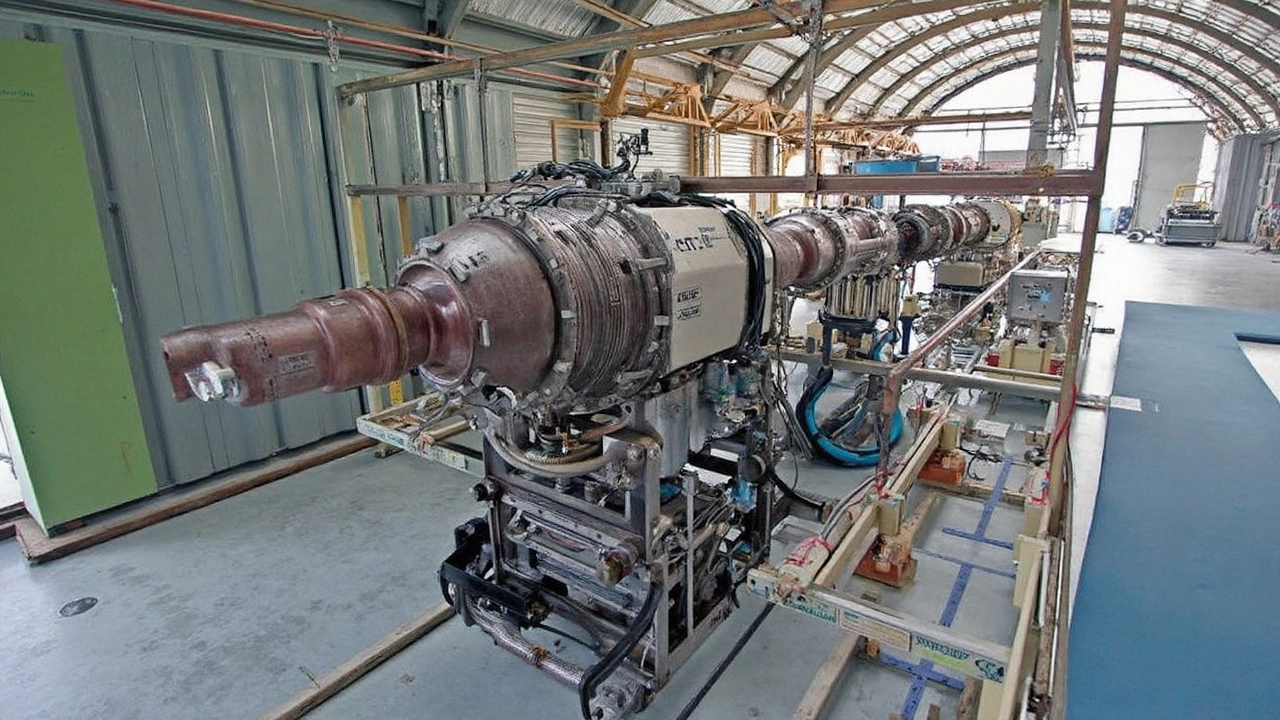Step Forward in Hypersonic Technology
In a significant stride for defense technology, the UK and the US have recently finished a crucial phase in the advancement of hypersonic weapons. Over a period of six weeks, 233 rigorous static test runs of a newly developed air-breathing hypersonic propulsion system were executed at the NASA Langley Research Centre in Virginia. This ambitious project was spearheaded by the Defence Science and Technology Laboratory (Dstl) alongside the US Air Force Research Laboratory (AFRL) and the UK-based firm, Gas Dynamics Ltd.
The centerpiece of this development is the propulsion engine, crafted to drive hypersonic cruise missiles capable of soaring beyond Mach 5 speeds. Such capability not only extends the range of these weapons significantly but also enhances their maneuverability compared to traditional rockets. The successful completion of these tests has validated the system's performance across both supersonic and hypersonic speeds, setting the stage for subsequent upgrades.

Implications and Future Goals
This technological breakthrough is closely aligned with the UK's Hypersonic Weapons Programme, which ambitiously aims to present a technology demonstrator by the year 2030. This initiative is under the guidance of the Ministry of Defence's Team Hypersonics, reflecting a broader strategic intent to bolster the nation's defense capabilities in an increasingly uncertain global landscape.
UK Defence Secretary John Healey has underscored the importance of such innovations, particularly in what he describes as ‘a more dangerous world’. His comments highlight the significance of the UK-US collaboration in enhancing military deterrence potential. Similarly, Dstl’s CEO Paul Hollinshead has emphasized this achievement as a reinforcement of the UK's standing in AUKUS hypersonic development efforts, showcasing the UK's commitment to maintaining a technological edge.
This project is reflective of the largest sustained defense spending increase in the UK since the Cold War, an investment driven by a heightened emphasis on national security in facing potential global threats. Through these advancements, the UK aims to ensure its armed forces remain at the forefront of defense technology, capable of addressing both current and future challenges.

Arlen Fitzpatrick
My name is Arlen Fitzpatrick, and I am a sports enthusiast with a passion for soccer. I have spent years studying the intricacies of the game, both as a player and a coach. My expertise in sports has allowed me to analyze matches and predict outcomes with great accuracy. As a writer, I enjoy sharing my knowledge and love for soccer with others, providing insights and engaging stories about the beautiful game. My ultimate goal is to inspire and educate soccer fans, helping them to deepen their understanding and appreciation for the sport.
view all postsWrite a comment